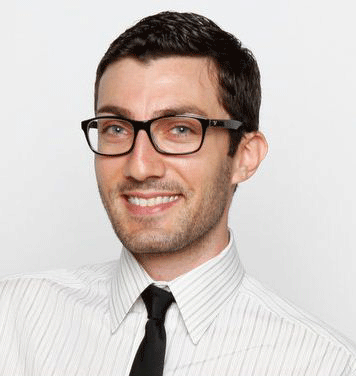Gellers Encourages the Nuancing and Development of Sustainable Practices

Gellers argues for nuancing of sustainable practices.
On April 14, Assistant Professor of International Relations at University of North Florida Joshua C. Gellers spoke about how innovation can solve environmental problems as part of Colgate’s “13 Days of Green” events. In his talk, Gellers claimed that society is failing to adequately address the challenges of today’s environmental problems. Gellers recognizes that people want to improve environmental issues, but says that they are not combatting the issues in the right way. Gellers said that individuals must revolutionize their thinking in order to make a real difference.
“People need to think smarter,” Gellers said. Gellers then cited the SeaBubble, a battery-powered taxi known as “The Uber of Waterways,” as an example of the creative thinking that is necessary for change.
The speaker employed creative terminology to explain how and where to begin innovative thinking. Gellers contended that people must understand the nature of environmental problems in order to find effective solutions. He classified environmental problems as either “tame” or “wicked.” When problems are “tame,” they are easy to define, have a clear identifiable cause and have a feasible solution. An example of a “tame” problem is water pollution from a direct source. On the other hand, when problems are “wicked,” they are harder to define, have a relative solution and have infinite room for improvement. Gellers noted that rising sea levels due to climate change is an example of a “wicked” problem.
Gellers stated that once people understand the root of the pressing environmental issues at hand, they can better explore potential solutions. Gellers labeled solutions as either “battleships,” “sailboats” or “speedboats.” While battleships are not agile or efficient, they are powerful and can result in change. A “battleship solution” is a very slow, large-scale solution. Another type of solution is a “sailboat solution.” Sailboats are agile, but their speed and direction is more mercurial, because it depends on the wind. Although they have some advantages, Gellers provided that people cannot be dependent on “sailboat solutions” in the long run. The last type of solution discussed was a “speedboat solution.” A “speedboat solution” is a rapid, quick fix that people cannot be dependent on long-term either. Gellers said that in order to solve today’s environmental problems most effectively, people must weigh the advantages and disadvantages of the potential solutions.
Gellers reframed the approaches to environmental problems as “tweaks,” “nudges” and “disruptions.” He then defined a “tweak” as an improvement to a mechanism or system through fine adjustments. While tweaks are useful, they only cause minor and incremental changes. Tweaks do not ask people about the impact of their individual choices. For example, deforestation is a major problem, and a possible solution is to recycle paper. However, recycling does not ask people to curtail consumptive behaviors that actually cause deforestation.
The next tactic that Gellers outlined was a “nudge.” A nudge is a non-mandatory intervention that alters behavior in a predictable way. For instance, a major environmental issue is household energy consumption. A potential solution is to install occupancy sensors in homes. By doing so, people do not have to act to turn off the lights. While this solution improves energy consumption to an extent, it does not inspire people to become consciously aware of their energy use.
The last approach that Gellers explained is a “disruption.” A “disruption” displaces an existing mode of operation through creative destruction. For example, a serious environmental problem is carbon emissions. A disruptive solution is self-driving vehicles, like Google’s self-driving cars. These vehicles produce fewer fossil fuels, and they create lower mortality rates due to human error. Geller emphasized that these cars are an example of a disruptive model for changing behavior, as they transport passively-engaged passengers with fewer environmental consequences.
Clearly, there are many different ways to consider potential environmental solutions, but people must also consider design thinking in order to address the gravity of today’s environmental problems. Gellers defines design thinking as a multidirectional and iterative process of inspiration, ideation and implementation. According to Gellers, people must start with the goal they want to achieve and work backwards, considering the possible tweaks, nudges and disruptions.
Going forward, Gellers wants people to remember that making a change begins with how they think. People must consider how they tackle the challenges ahead of them. Are the potential solutions battleships, speedboat or sailboats? Are they tweaks, nudges or disruptions? While each problem and potential solution differs from case to case, Gellers left the Colgate community with an important lesson. Gellers reminded us of the importance of addressing matters from a creative approach with an open mind. If we embrace a new way of thinking, we will surprise ourselves with what we can achieve.






